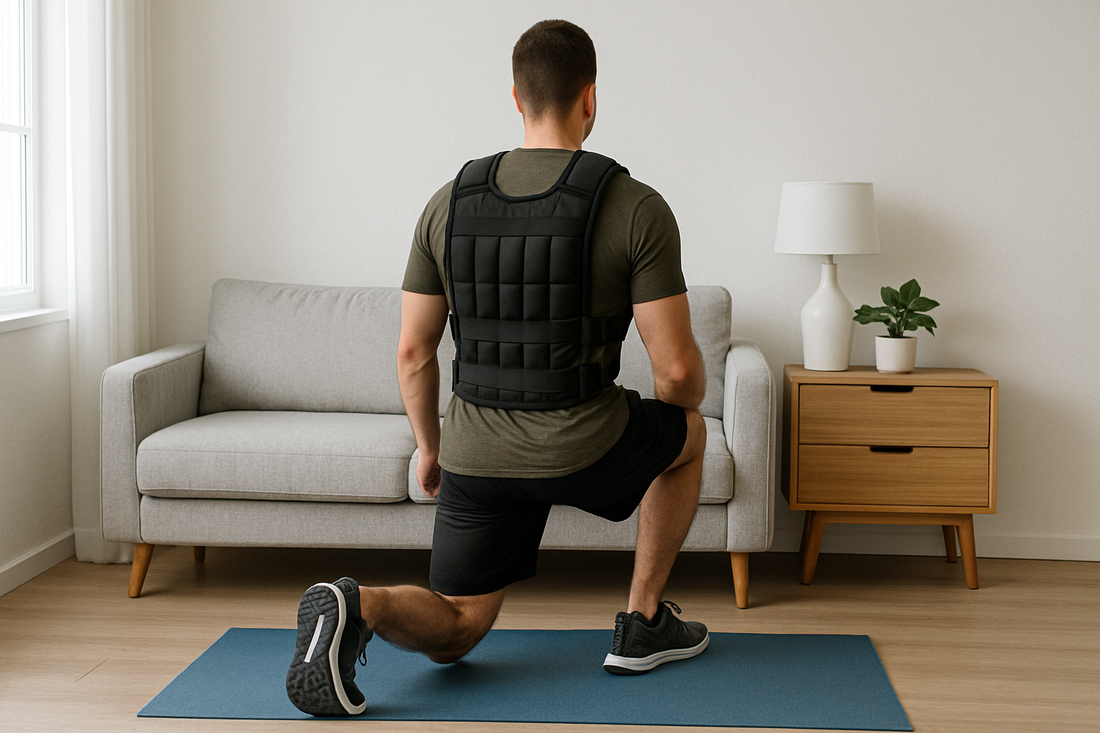
Weighted Vests: Benefits and Buying Guide
I. Introduction
If you’re looking to take your workouts to the next level without adding bulky equipment, a weighted vest might be your new favorite tool. This simple but powerful accessory can transform bodyweight training, running, and HIIT into more efficient, full-body workouts.
By adding controlled resistance, weighted vests help you build strength, endurance, and stability — all while keeping your training minimal and convenient.
II. Benefits of Using Weighted Vests
Weighted vests are more than just “extra weight.” They train your body to move with greater control, making every exercise more challenging and rewarding.
• Increased Strength and Endurance — Added resistance helps muscles adapt faster, improving strength and stamina over time.
• Enhanced Cardiovascular Health — When used during runs or HIIT, vests improve heart and lung efficiency.
• Improved Bone Density — Consistent load-bearing activity stimulates bone growth and durability.
• Boosted Calorie Burn — Studies show you can burn up to 10–15% more calories with added bodyweight.
• Better Posture and Core Stability — The added resistance trains balance, posture, and deep core engagement.
With consistent use, weighted vests help you build lean muscle and endurance even during short daily workouts.
III. Types of Weighted Vests
Choosing the right vest depends on your goals and fitness level.
• Adjustable Weighted Vests: Great for versatility — add or remove weights as needed.
• Fixed Weight Vests: Perfect for running or HIIT when you need stability.
• Slim or Compact Vests: Designed for everyday movement or lighter sessions.
• Heavy-Duty Training Vests: Ideal for CrossFit or intense strength workouts.
👉 Try pairing your vest with Resistance Bands & Loop Sets for balanced upper and lower body training, or Ab Rollers & Core Trainers to challenge your core stability even further.
IV. How to Choose the Right Weighted Vest
When buying a weighted vest, comfort and purpose are key.
• Fit & Comfort: Look for breathable fabrics and even weight distribution to avoid shoulder strain.
• Weight Range: Beginners should start with 5–10% of their body weight.
• Material & Durability: High-quality nylon or mesh helps with longevity and ventilation.
• Purpose: For cardio, pick lighter vests; for resistance training, go heavier.
• Adjustability: If you plan multiple workout types, choose a vest with removable weights.
PrimeVita’s Weighted Vests & Training Belts are designed with ergonomic fits, adjustable straps, and secure fastenings for every training intensity.
V. Sample Workouts with a Weighted Vest
Even short sessions can feel powerful with extra resistance. Try these:
1. Strength Circuit (10 minutes)
• 10 squats
• 10 push-ups
• 10 lunges (each leg)
• 30-second plank
Repeat 3 rounds wearing your weighted vest.
2. Cardio Blast (15 minutes)
• 1-minute jump squats
• 1-minute burpees
• 1-minute stair climbs
Rest 30 seconds and repeat 4–5 times.
3. Core Burn (8 minutes)
• 30-second mountain climbers
• 1-minute plank with vest
• 1-minute side planks
Pair this with Resistance Bands & Loop Sets for a complete session.
VI. Safety Tips & Best Practices
Weighted vests are safe when used correctly — the goal is progress, not overload.
• Start light (5–10 lb) and increase gradually.
• Keep your posture upright to protect your spine.
• Don’t wear it for every workout — alternate with bodyweight days.
• Maintain ventilation — use Fitness Towels (Quick-Dry) to stay comfortable.
• Focus on form over speed; poor technique with added weight can cause strain.
VII. FAQ — Your Weighted Vest Questions Answered
Q1. Are weighted vests good for weight loss?
Yes. The added resistance increases calorie burn and metabolic activity, especially during cardio and HIIT.
Q2. How heavy should my vest be?
Start with 5–10% of your body weight. Gradually increase once you feel stable and comfortable.
Q3. Can I use a weighted vest for running?
Absolutely. Choose a slim, snug design that doesn’t bounce. It enhances cardiovascular endurance safely.
Q4. Do weighted vests improve posture?
Yes — they engage your core and back muscles to help maintain alignment and balance.
Q5. Can beginners use a weighted vest?
Yes, but start light. Focus on bodyweight mastery first, then increase resistance.
VIII. Conclusion
Weighted vests are one of the most effective tools to elevate your home fitness routine.
Whether you’re building strength, improving cardio, or simply looking to make workouts more challenging, they offer unmatched versatility and long-term results.
Explore PrimeVita’s curated Weighted Vests & Training Belts, Resistance Bands & Loop Sets, and Ab Rollers & Core Trainers to take your training — and your confidence — to the next level.


